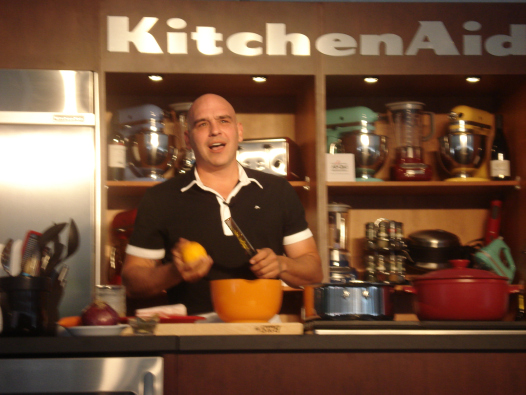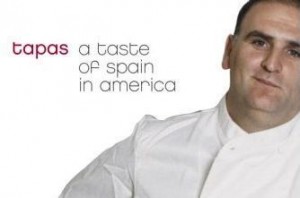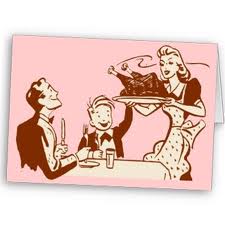{ Savory Tv is pleased to introduce you to Chef Christopher Cina. A graduate of the Culinary Institute of America, Christopher is a well seasoned chef, international traveler, and food photographer. He has worked in restaurant venues around the world, including San Francisco, Europe, and Denver. He currently lives and works in Denver, Colorado, and has a beautiful food blog at ChristopherCina.com. Please join us in welcoming Chef Christopher, as he shares a restaurant secret and favorite appetizer recipe with us in this very special guest post! }
White Bean Pâté
In restaurants, the name of the game is money. In your better restaurants, this is tempered somewhat by quality, meaning that chefs and owners are willing to pay more for better quality. The most ‘high end’, well respected and nationally known restaurants have the luxury of passing the cost of quality on to the customer. Not so much for the little guy. Independent operators with talented but unfamous chefs are forced walk that fine line between being overpriced and serving lesser quality ingredients. You would expect to pay $44 for a hangar steak at Robuchon, but would you pay that at a local restaurant downtown that didn’t have a chef with 4 restaurants, a cookbook and a gaggle of Michelin stars?
“Necessity is the mother of all invention.” Never have truer words been spoken and this is a common mantra at every ‘middle-of-the-road’ restaurant trying to watch costs. If there is a cheaper way to do it without sacrificing quality, someone in that restaurant will figure it out. It could be reconfiguring a dishwasher that the chemical guys don’t know about, building a plug out of skewers for that damn Robot Coupe bowl, or a recipe like this White Bean Pate.
In the late 90’s while at my first Executive Chef position, dairy prices were through the roof. So much so that we halved the portion of butter that we served with the bread as an option to help offset the cost. The only other option would be to reprint all the menus with higher plate costs. You see, every restaurant includes a little formula while pricing out dishes, what I call the ‘Q Factor’. It is in every one of my costed out menus. A ‘Q Factor’ is a charge for everything in a restaurant the customer sees as free, because it is not on the bill. I figure in the cost per person of my bread service, meaning bread and butter, I figure in ketchup, mustard, mayonnaise, coffee creamer, coffee sweetener, even salt and pepper. That number is figured into every dish on the menu. It’s never a big number, always less than a dollar per plate, but that helps me pay for the things customers see as complimentary.
Back to the pate, I needed to figure out something that would help my butter cost. Halving the butter portion only upset people, they would ask for more and they were getting more than they were originally before we adjusted the portion. I didn’t want to go back to the olive oil, everyone else at that time was doing olive oil, plus it was expensive for really good oil and I wasn’t going to skimp there. I was forced to come up with something original that would act as a butter substitute, hence the white bean pate. It was vegetarian, used a third of the butter and it was different. My guests loved it, they always asked for more, and because the ingredients were so inexpensive, it worked out well. We started getting a lot of requests for the recipe. So many that we began to put a stack of the recipes at the host stand every night.
I use a little more butter in my home version, I’m not worried about the cost as I would be making a much larger batch and who doesn’t love butter? Once made it will keep in the fridge for up to a week. Truth be told, it’s at its best about the 3rd day, when all the flavors have become intertwined.
This recipe makes about 2 quarts of pate.
- 1 ½ # Great Northern Beans
- 1 ¼ # butter, softened to room temperature
- 1 bay leaf
- 1 large red onion, julienned fine
- 1 cup balsamic vinegar
- ½ cup whole garlic cloves
- olive oil, about a cup and a half
- 1/2 cup chopped parsley
- salt and white pepper to taste
Method
- Simmer (do not boil!) the white beans in unsalted water with bay leaves just until they start to split, about 2 ½ hours.
- While the white beans are simmering, in a small sauté pan, cover the garlic cloves with oil. Place them on medium low heat and allow them to soften and turn golden brown.
- Allow the garlic to cool.
- Drain the oil and reserve in the fridge.
- In a small mixing bowl, mash the garlic with a fork. Reserve until the beans are done.
- Heat a larger sauté pan with 2 Tbs. of oil, place on medium high heat.
- When the pan is hot, add the onions and cook until they start to develop some color, about 5 minutes.
- Add the balsamic vinegar to the onions, reduce by half and remove from heat. Reserve until the beans are done.
- When the beans have finished, remove the bay leaves and drain.
- While the beans are still hot, begin to mash them with a large spoon. You can also mash them in a mixer with the paddle.
- Once you’ve mashed the beans, add the butter, half pound at a time and continue to mix until all the butter has been incorporated.
- Add the mashed garlic, onions and vinegar, and parsley and mix well.
- Season with salt and white pepper. Keep in mind while seasoning hot ingredients that will be served cold, you want to slightly over salt as the saltiness will dissipate considerably when served cold.
- Remove to a serving dish and chill for at least 4 hours.
- Serve with breads, crackers or anything else you might use with a spread.











